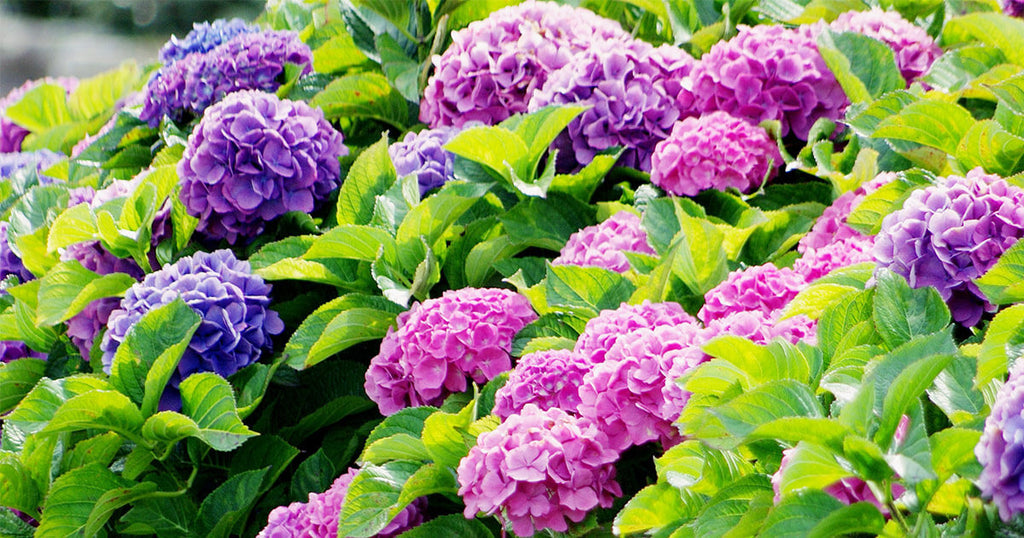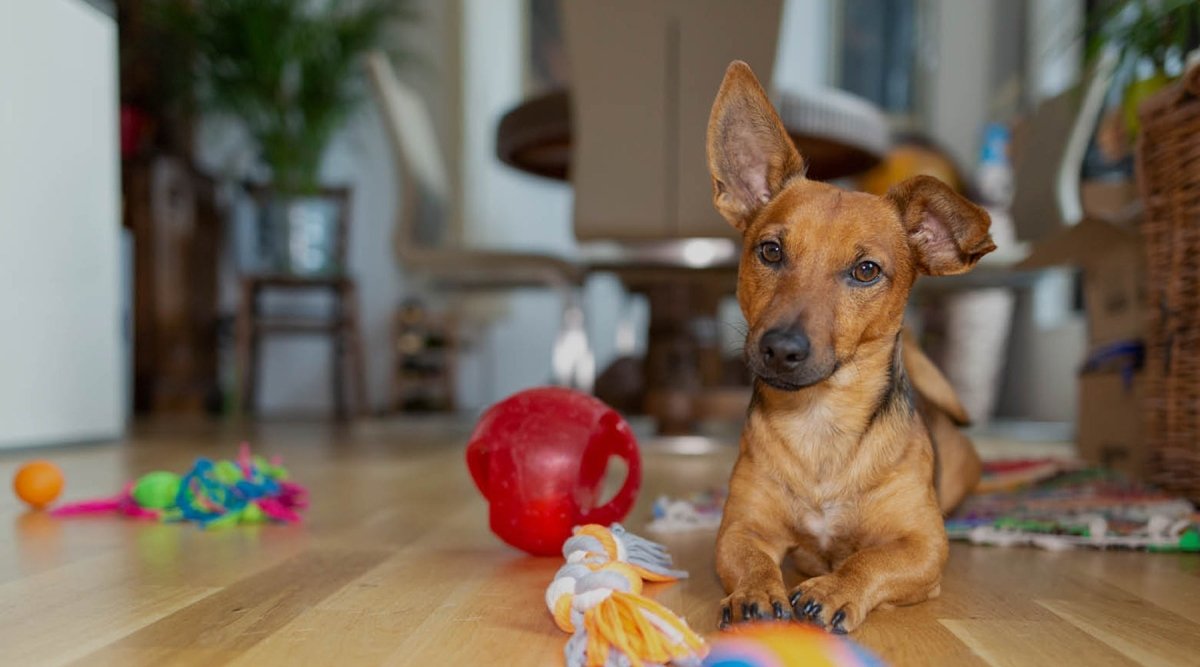The sun is coming out, it's blooming outside again and both humans and animals are waking up from hibernation: the gardening season has begun. Especially under the current conditions, we spend a lot of time in our beloved garden or on the balcony at home. Over the next few weeks, we will put a lot of sweat, time and joy into creating a green oasis of well-being. But did you know that a lively garden with beautiful flowers, shrubs and trees can be dangerous for your dog or cat? This is because many of the popular garden plants are poisonous to our pets and can even be life-threatening. Dogs and outdoor cats in particular like to search for food in the garden and occasionally nibble on some twigs, leaves or even berries. If you want to make your garden pet-proof, make sure you avoid poisonous plants for dogs and cats. We have compiled a list of popular garden plants that are unfortunately poisonous for your four-legged friend.
Poisonous plants for dogs and cats - the top 10 list

Lilac
When the first scent of lilac reaches your nose, you know that spring has arrived. The plant, which belongs to the olive family, blooms from April to June and adorns numerous gardens and can also be found along the roadside. The scent of lilac is so popular that scented candles, perfumes and oils are often based on this light-footed aroma. Although the scent of lilacs is so lovely and beguiling, the tree itself is a slightly poisonous plant. Dogs and cats in particular, but also small children, can suffer symptoms of poisoning. Substances such as syringin, anisaldehyde, alpha-pinene and the essential oils can sometimes trigger allergies, nausea and breathing difficulties. Therefore, lilacs are poisonous to dogs, cats and small children.

Cherry laurel
Cherry laurel or laurel cherry is an ornamental shrub imported from Asia Minor. It is very popular as a green hedge all year round, mainly due to its everlasting green leaves. The cherry laurel is not only found in domestic gardens, but also in parks and increasingly in forests. Unfortunately, it is a poisonous plant for dogs and cats. This is because the seeds and leaves of this ornamental shrub contain toxins, so-called cyanogenic glycosides, which are poisonous to both animals and humans. If the cyanogenic glycosides are ingested and broken down in the stomach, the dangerous hydrocyanic acid is released. It triggers various symptoms of poisoning in dogs and cats, including respiratory arrest.

Hydrangeas
Hydrangea has also made it onto the list of poisonous plants for dogs and cats. It is a popular ornamental shrub in German gardens and impresses with its colorful flowers. However, dogs, cats, small animals and birds are less happy about the flowering shrub. This is because hydrangeas are also poisonous to dogs and cats. They contain toxic substances such as hydrocyanic acid, saponins, hydrangin and hydragenol. These substances can lead to poisoning in animals if consumed in large quantities. Even sensitive people are not spared: although skin irritation is rare, it can occur as an allergic reaction. Hydrangeas are also said to have a hallucinogenic effect, but this is due to the dangerous hydrocyanic acid that is released when smoked. It attacks the nervous system and can lead to poisoning if overdosed.

Tree of life
The arborvitae, which originates from North America and Asia, adorns gardens, cemeteries and parks, as the plant is very popular with gardeners as a hedge protection. However, this tree is highly poisonous, not only for dogs and cats, but also for larger animals such as horses and cattle. Its leaves in particular are very toxic to animals. The essential oils of the plant accumulate in the tips and can sometimes cause skin irritation and have a psychoactive effect. However, the plant is not harmless to humans either and can trigger numerous physical reactions.

Lily of the valley
The sweet lily of the valley looks so inconspicuous and harmless due to its white flowers. However, the lily of the valley, as it is commonly known, is one of the most poisonous garden plants for cats and dogs. It is not without reason that this herbaceous plant was voted the most poisonous plant of the year in 2014. Its flowers and fruits in particular are highly poisonous to many animals, but also to humans. Therefore, lily of the valley does not belong in the home garden and should be cultivated in a flower pot, if at all, out of reach of dogs, cats and children.

Oleander is also an evergreen shrub with beautiful flowers in pink, red and white. As the plant originates from the Mediterranean region, it does not like the cold and is therefore kept in tubs or flower pots. It is therefore also very popular as a balcony plant. Oleander belongs to the dog poison family and, as the name suggests, the plant is particularly poisonous to dogs - but also to other animals and humans. The oleandrin it contains is a cardiac glycoside that can lead to heart problems and can also cause nausea and vomiting as symptoms. Care should be taken with puppies and small children in particular, as they can ingest the fallen leaves of the shrub and become poisoned.

Rhododendron
Rhododendron: the beauty with a dangerous aftertaste. This plant is a real eye-catcher in any garden or park. Many amateur gardeners invest a lot of time and care in this demanding plant. However, the alpine rose, as the shrub is also known, is very poisonous to animals. Substances such as diterpenes, grayanotoxins and acetylandromedol are plant toxins and can be fatal not only for dogs and cats. Even the Federal Institute for Risk Assessment (BfR) has warned of cases of poisoning from grayanotoxins in rhododendron honeys. Rhododendron is therefore not a pet-friendly plant either.

Angel's trumpet
The angel's trumpet is not as angelic for dogs and cats as its name suggests. It is true that it is a very attractive plant that adorns balconies and gardens, especially due to its spreading and unique flowers. However, it is also highly poisonous to animals. The shrubs, which belong to the nightshade family, have a very high proportion of tropane alkaloids. These nitrogenous organic compounds are highly toxic to animals and humans and can cause loss of consciousness and even death. This deadly plant is therefore not suitable for pet owners with dogs, cats and other small animals.

Boxwood
Unfortunately, the popular boxwood, colloquially known as box, also belongs on the list of the most poisonous plants for dogs and cats. Its more than 70 alkaloids make it very dangerous for pets. Not only dogs and cats are affected, but above all rodents, which like to nibble on green growth. The plant substance buxin, which is abundant in boxwood, can cause symptoms of poisoning even in small quantities.

Autumn crocus
The list of poisonous plants for dogs and cats is completed by the widespread autumn crocus. It can be found in gardens, blooms in meadows, fields and along roadsides. Its flowering period is mainly from late summer to fall. While the flowers of this ornamental and wild plant resemble crocuses, its leaves look like wild garlic. For this reason, poisoning with autumn crocus is common due to confusion with wild garlic. This plant is highly poisonous to animals. It contains the plant toxin colchicine, which is also a poisonous alkaloid. Dogs, cats and even horses can suffer paralysis and cardiovascular failure. If the poisoning is not treated in time, this plant can be fatal.
Symptoms of poisoning by plants
Many pet owners are not even aware of the numerous poisonous plants in the vicinity of their dogs and cats. However, they pose a great risk of poisoning. In unobserved moments, cats can play with lily of the valley, dogs can nibble on boxwood sticks or rodents can chew on the leaves of an autumn crocus. If you notice your pet doing this, take the food and toy away immediately. If the dog does not voluntarily give up its stick, offer it another more attractive object to chew on. Unfortunately, many pet owners do not realize whether their pets have chewed on a poisonous plant. You should therefore react quickly if the following symptoms occur:
- Irritation of the mucous membranes
- Pupil dilation
- Nausea and vomiting
- Flatulence and diarrhea
- cramps
- drop in blood pressure
- listlessness
- low body temperature
- slow heartbeat
- cardiac and respiratory paralysis
Also check the surrounding area to see if there is a poisonous plant for dogs, cats or rodents nearby. This may allow you to alert your vet to a possible cause at an early stage. The earlier the poisoning is detected, the better the chances are for your four-legged friend.
First aid for dogs and cats after poisoning
As a general rule, if you can detect a possible poisoning in your pet, you should go straight to the vet. This way you will lose the least amount of precious time, which can save lives when dogs and cats are poisoned. If your vet is not currently open, register at the nearest veterinary clinic. Always monitor your pet's condition.
If the poisoning has only just occurred and the symptoms are not yet very advanced, you can also give your four-legged friend activated charcoal tablets. The charcoal tablets can help to slow down the effects of the poison and, in the best case scenario, they transport the toxins out of the body. However, pay attention to the appropriate dosage. You should also not give charcoal tablets if you have difficulty breathing or swallowing. This is because there is a high risk of them getting into the wrong tube, which can lead to choking.
If you have given your pet other medication, remember to take the package with you to the vet. This will help him to adjust the medication.
If your dog's or cat's body temperature has already dropped, keep them warm with a blanket during transportation to the vet. It is best to organize someone who can help you take care of them during the journey.
If you can remember to take the poisonous plant or any other poisonous bait with you in the heat of the moment, this would make it much easier to treat your four-legged friend. Vomit or excrement can also be helpful for analysis.
Conclusion
As you have seen, there are plenty of poisonous plants for dogs and cats lurking in our gardens, on balconies and in the wild. Even as a botany layman, you have certainly seen one or two poisonous plants. Some of these shrubs, trees and flowers may also be in your garden or decorate your balcony. To be on the safe side and protect your four-legged friend or even the neighbor's stray cat, you can cultivate animal-friendly plants in your flower bed. This will prevent possible poisoning of your pet in your garden and save you and your pet unnecessary suffering.



